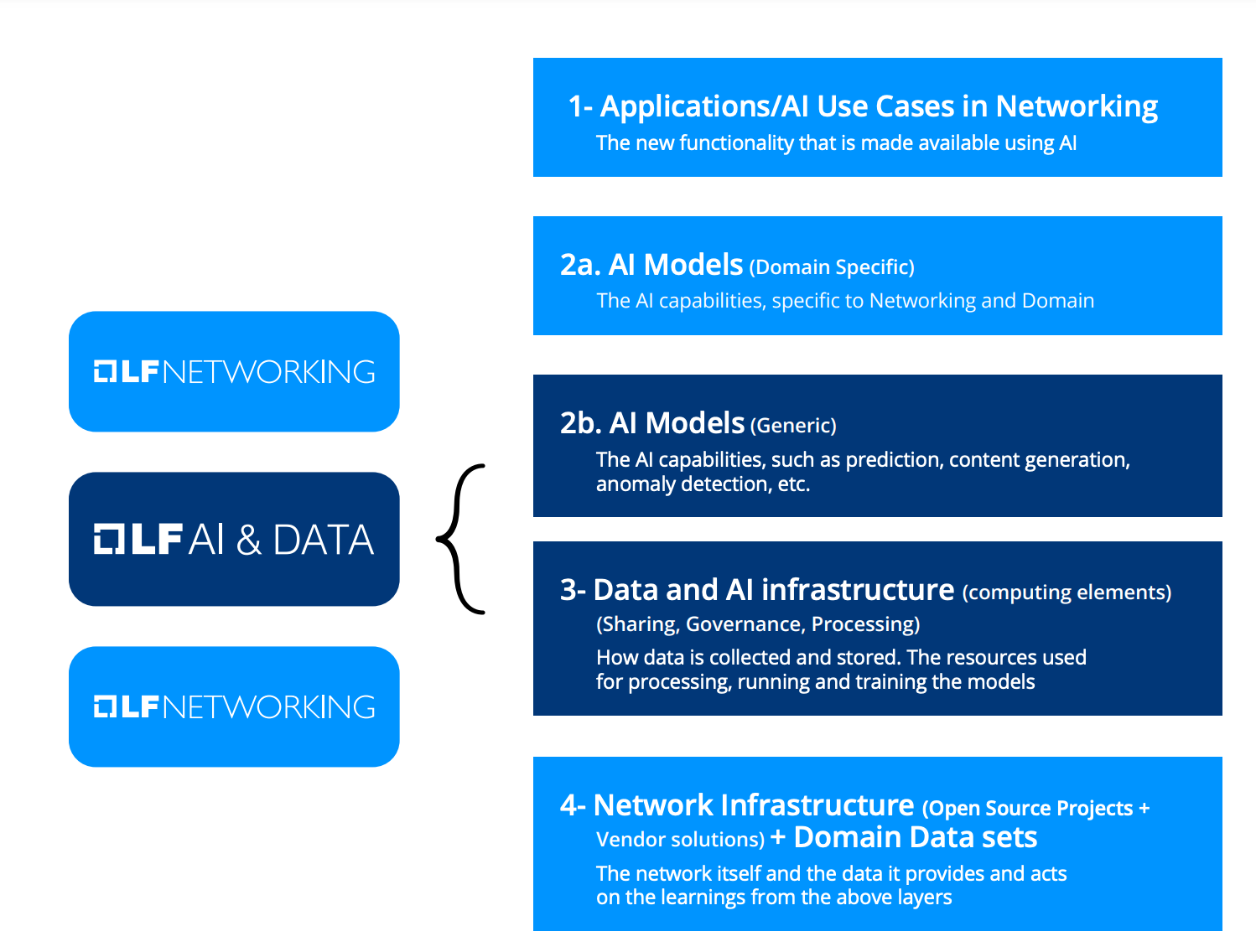...
Projects and Research
1.5 page
3GPP Intelligent Radio Access Network (RAN)
The intelligent evolution of wireless access networks is currently in a phase of rapid evolution and continuous innovation. In June 2022, 3GPP announced the freezing of R17 and described the process diagram of an intelligent RAN in TR37.817, including data collection, model training, model inference, and execution modules, which together form the infrastructure of an intelligent RAN. This promotes the rapid implementation and deployment of 5G RAN intelligence and provides support for intelligent scenarios such as energy saving, load balancing, and mobility optimization.
...
How could Open Source Help?
2-3 pages
When considering the role of open source software in addressing the challenges of Network AI it It is important to understand the current landscape of Open Source Software (OSS) projects and initiatives and how they came into existence to see how OSS is well positioned to address the challenges of Intelligent Networking. Several such initiatives have already laid down the ground work for building Network AI solutions, or are actively working on in the process of creating them. Building on these foundations, it is possible easy to envision what the critical role open source software will can play in unleashing the power of AI for the future generations of networksnetworking. Some of the required technologies required of Network AI are unique to the Networking industry, and will have to be addressed by the existing OSS projects on the landscape, or by the creation of additional ones. Some pieces of the other pieces of technology technologies are more generic, and will need to come from the broad landscape broader community of AI OSS. Here is a rough outline of the different layers of Networking AI and the source of sources for the required technology:
In addition, successful development of AI models for use in Networking relies on the availability of data that could be shared under a common license. The Linux Foundation created the Community Data License Agreement (CDLA) for this purpose. Using this license, end users can share data and make it available for researchesresearchers, who in turn can further develop the necessary models and applications that benefit the telecom ecosystems and ultimately the end users.
Related Open Source Landscape
...
The legal and technical framework for sharing research is important, but what is really essential for driving innovations are is the ability for Open Source to provide a forum for creating communities with shared purpose. These communities by allowing people from various companies, diverse skill levels and different cultural perspectives to collaborate, have the potential to spark real innovation in ways that are not really possible in any other context.
- Network communitiesCommunities
Open Source Software (OSS) communities have been successfully building projects that provide the building blocks of for commercial networks for over a decade. OSS projects provide the underlying technology for all layers of the network, including the data/forwarding plane, control plane, management and orchestration. A vibrant ecosystem of contributing companies exists around these projects, consisting of organizations that realized realize the value of OSS for speeding the development of networking technology:
...
Many of the networking OSS projects are hosted by the Linux Foundation. Most of them are part of LF Networking, LF Connectivity and LF Broadband.
- AI communitiesCommunities
The same principles are now being applied to the shared development of Network AI technologies, where the open source community fosters innovation and potentially stimulates business growth. AI innovation has been strongly propelled by OSS projects that were initiated following the same principles of open collaboration. It is hard to imagine doing any modern AI development without heavily relying on OSS. OSS AI and ML projects range from anything from the frameworks for development to libraries and programming tools. OSS work means that data scientists who develop domain specific models such as networking and telecommunications, can focus on innovation by leveraging OSS projects to jump start their work. It would be almost impossible to mention all the relevant OSS AI projects here as there are already so many, and the list only keeps growing. The Linux Foundation AI & Data maintains a useful dynamic landscape here.
- Open AI modelsModels
There is a lot of debate on the definition of what an "Open AI model" really means. While it is out of the scope of this paper to try and settle any of those debates, it is obvious that there is a clear need to create the definition of "open LLM". The sooner such definition is created and blessed by the industry, the faster innovation can happen.
...
